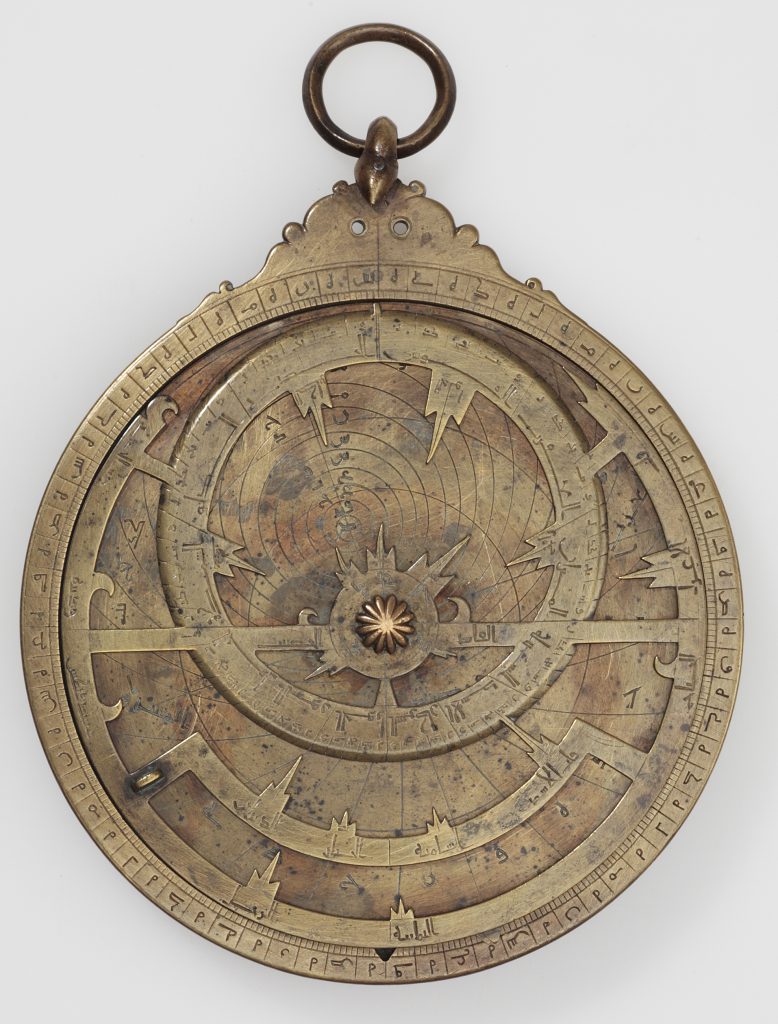



Title: Planispheric Astrolabe
Date: 9th century AD
Location: North Africa
Materials: brass, cast, with fretwork rete and surface engraving
Dimensions: 18.5 x 13.2cm
Accession Number: SCI 430
Other Notes:
The astrolabe, an invention of Hellenistic Alexandria, was the principal Islamic instrument for telling the time, surveying and determining latitude. By the later 9th century it was used throughout the Islamic world from Spain to India and later reached Christian Europe. By modelling the apparent rotation of the stars about the celestial pole, it solves a number of astronomical, and astrological, problems. Notably, the provision of a simple sighting device made it possible to calculate the elevation of a particular star, or of the sun, and thus both determine the time and indicate the direction of the North Pole. Moreover, although an astrolabe does not show the movement of the planets, planetary tables enabled the astrologer to know the position of a planet relative to the constellations of the zodiac, which are generally engraved on the plates. The instrument consists of a solid body, the mater, into which fit a series of plates and a revolving circular web-like star map, called the ‘rete’ in Europe and the ‘ankabut (‘spider’) in the Islamic world. The various elements, supplemented by a sighting vane (the alidade), on the back of the instrument, were held together by a pin.
The mater of this astrolabe houses two plates and is overlaid by the rete and, on the reverse, by the alidade. The craftsman’s signature appears on the back.
Apart from its early date, this astrolabe is particularly interesting because the star pointers of the rete give not only stars from the Babylonian-Hellenistic (and ultimately European) star lists but also individual stars with pre-Islamic Beduin names. These, of course, remained important long after the coming of Islam for they were invaluable aids to navigation, and in many ways were of more practical use than the arbitrary division of the heavens into the classical constellations, which Islamic astronomy and astronomical instruments overwhelmingly favoured.
Bibliography:
J.M. Rogers, The Arts of Islam. Masterpieces from the Khalili Collection, London 2010, cat.364, p.308.
Zoom
Close

Create your own collection of artworks that you can print or save as a PDF. Please enter you email to enable feature.
Small Flask | JLY 1075
Has been added to your collection.
TIP:
You can now access and view your collection from the main menu at any time.